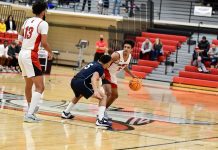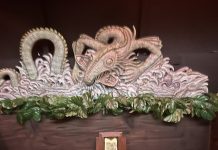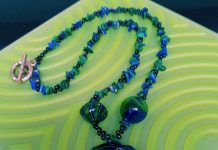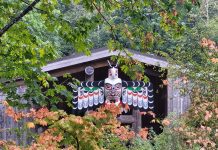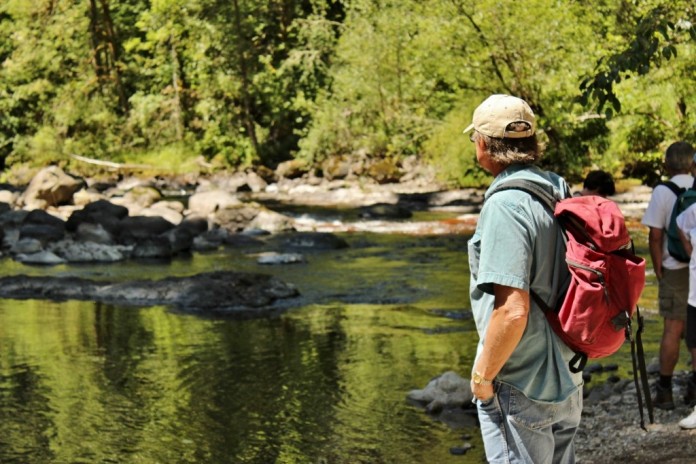
Hitting the boardwalk at the Billy Frank Jr. Nisqually National Wildlife Refuge on a quiet and sunny Wednesday morning, it didn’t take long to feel completely surrounded by and immersed in nature. Within seconds, the large trees engulfed me in a leafy canopy and the sounds of bird calls filled my ears. A camera and some water was all I needed for a restorative morning wandering the trails, catching glimpses of wood ducks swimming through the wetlands and trying my best to photograph a bald eagle perched on a branch above the estuary. After a few hours, I’d gotten in some exercise, filled my camera with dozens of pictures and learned a lot about the habitats, wildlife and history of the Nisqually River Delta.
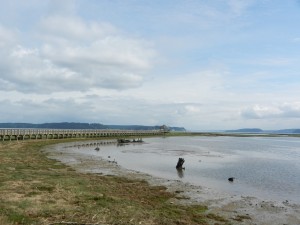
From wildlife viewing and hiking, to photography and programs for kids, a visit to this protected estuary offers something for everyone.
Hiking Trails
The Nisqually National Wildlife Refuge is home to everything from beavers to bald eagles, so there is no shortage of opportunities to view wildlife. The refuge has miles of trails to help you explore the natural habitats here, which range from open saltwater to freshwater wetlands. Be sure to keep in mind these wildlife viewing tips to get the most of your experience while you trek.
The paths are mostly flat, comprised of a mixture of boardwalks, gravel trails and dirt paths. The one mile Twin Barns Loop brings you through grasslands, woods and wetlands, where you’ll see plenty of wildlife and have the opportunity to learn about your surroundings through several informative signs along the way.
If you’re up for a longer jaunt, then you won’t want to miss walking all the way out on the Nisqually Estuary Boardwalk Trail, where you’ll walk on an elevated boardwalk above the tidal areas for 1.5 miles. The views are exceptional. Your surroundings (and the wildlife activity in them) change depending on tides, so you might want to check the tide charts before you go to plan accordingly.
Bird’s Eye View
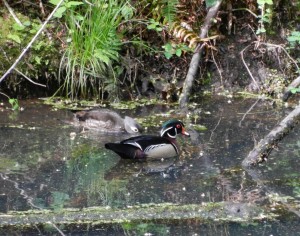
The Nisqually Wildlife Refuge is a birder’s paradise. Over 250 species of birds have been recorded here. Check out some binoculars from the Visitor Center before heading out on the trail and take along this bird list to keep track of your sightings. If you would like to join a group of birders, head to the refuge on a Wednesday morning for the popular weekly bird walk, open to all skill levels.
Fishing and Hunting
Fishing is allowed at the refuge, but only via boat access. Learn more about fishing at national wildlife refuges here. A limited area of the refuge is also open to hunting. For information on when and where you can hunt, be sure to check out this brochure.
Photo Ops
Opportunities for photography abound at Nisqually Wildlife Refuge. From wildlife sightings to expansive natural landscapes, photographers will have no shortage of inspiration here. Bring some comfortable shoes, a bottle of water and your camera for a one-of-a-kind outdoor photography experience. The Nisqually Wildlife Refuge is open daily from sunset to sunrise, so catching the landscape lit up by the sun rising over Mount Rainier or setting on the horizon is always an option.
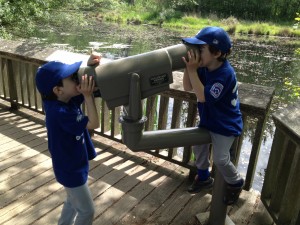
Guided Tours and Talks
There’s plenty of opportunities to explore the habitats here on your own, but if you would like to learn more and enhance your experience, consider taking part in one of the many Interpretive Programs available.
Programs for Kids
There are plenty of family-friendly activities at the Nisqually Wildlife Refuge, so bring along your kids for a fun family outing. Visit the Nature Explore Area (for kids two to eight years old), and consider the Junior Refuge Manager Program for kids ages 4 to 11. A workbook with activities makes exploring the refuge exciting and fun for kids, and they’ll even get a certificate and a badge after finishing the free program.
Visitor Center and Gift Shop
Start and finish your day at the Norm Dicks Visitor Center. There’s a small exhibit area with information on the Nisqually watershed, the habitats around the area and more. A small gift shop offers books on wildlife and other goods to remember your experience by.
Know Before You Go
-
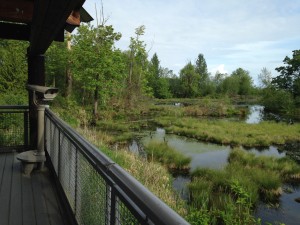
Beautiful views of nature are in no short supply at the Billy Frank Jr. Nisqually National Wildlife Refuge. There is a daily fee of $3 to enter the refuge, which allows for up to four adults. Children 16 and under are admitted free of charge.
- The Norm Dicks Visitor Center and Nature Shop are open Wednesday through Sunday 9:00 a.m. to 4:00 p.m.
- The only bathrooms are located at the Visitor’s Center, and there are porta-potties at the twin barns.
- No pets, jogging or bicycling are allowed on the trails.
For more information about the Nisqually Wildlife Refuge, including how to get there, visit the Washington Trails Association online.












